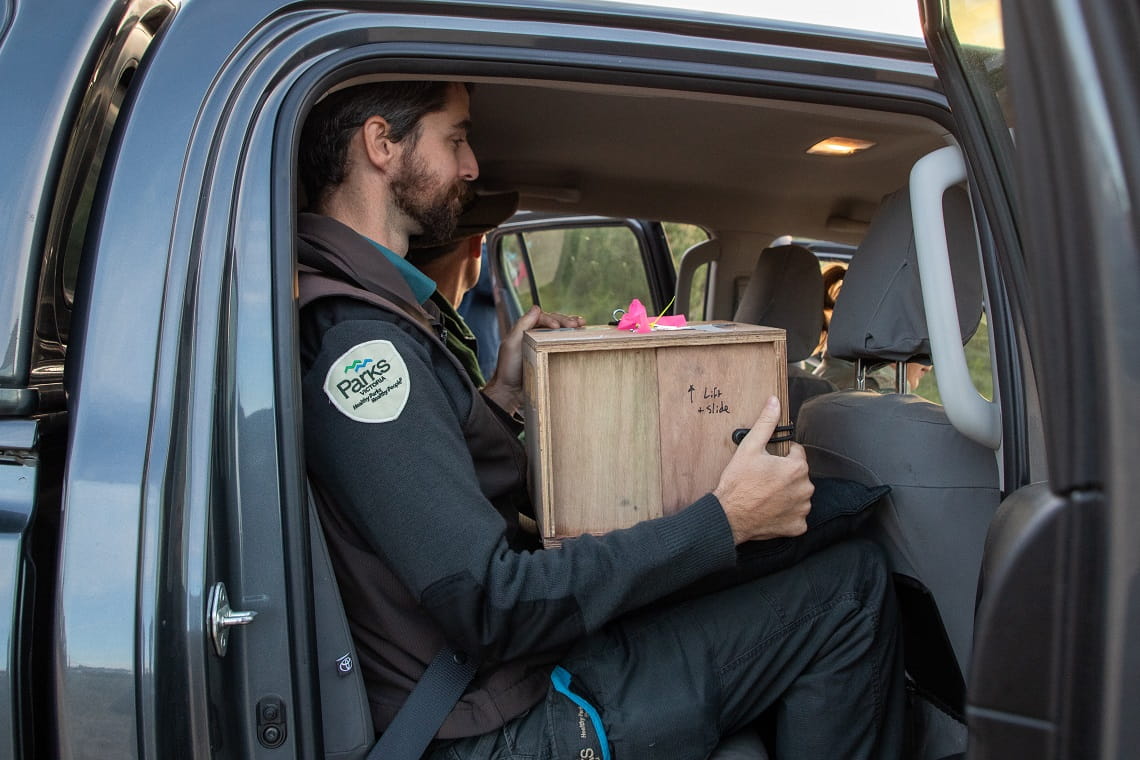After months of careful planning, eleven more eastern bristlebirds have been released into their new home at Wilsons Promontory National Park. This delicate translocation is part of a three-year program to secure the future of this nationally threatened species.
Until the Wilsons Promontory population was established in 2022, the entire eastern bristlebird population was restricted to just three geographically separated regions across the east coast of Australia. The only Victorian population was in Cape Howe, east of Mallacoota. The 2023 translocation aims to introduce the unique genetics of the southern population into the newly established population at Wilsons Promontory.
The 2023 translocation
"Howe Flat in Croajingolong National Park is a significant and unique site for biodiversity that came close to being destroyed in the Black Summer bushfires," says Dr Mark Antos, Parks Victoria's Manager for Biodiversity Science.
"There are roughly 200 eastern bristlebirds here, so by taking no more than 12 individuals we are able to avoid upsetting the delicate balance of this population, but ensure that the establishing population at the Prom will have the unique southern alleles incorporated into it an early stage. This means any local adaptations from the Howe Flat population will be expressed in the new population at the Prom as it grows, increasing their genetic resilience and adaptability.
The first challenge is to capture some bristlebirds. Their habitat is scoped out by wildlife experts and a 'mist net' is set up to safely trap the birds. We then play audio recordings of the eastern bristlebird call to attract them to the catch zone.
Once a bird is trapped in the net, we need to act quickly to move it to the processing tent, where it is banded, measured and has a tiny little radio transmitter stuck to it with animal-safe glue, then placed carefully into its transport box.
The welfare of the eastern bristlebirds is always at the forefront when working with the birds and a strict set of rules developed by an animal ethics committee and translocation panel, as well as extensive planning, guide our actions. Handling time is kept to a minimum and only specially trained bird handlers are allowed to catch and process them. A highly experienced wildlife vet and vet nurse from Zoos Victoria are onsite to assist with the operation.
The boxes they are transported in were specially designed to keep the birds safe and calm for the six-hour drive to Wilsons Promontory. They've got specially-grown native grasses inside the box that are familiar to the birds, these help to keep them cosy and feel secure on the trip.
The entire car journey needs to be silent, which means no radio, music or chatter to pass the time.
Once they have arrived at the secret site in Wilsons Promontory National Park at dawn, the box is placed on the ground and the birds are given a quick visual inspection to make sure they have fared well on their journey the door is then opened and the birds can hop out and fly into their new home in their own time."
For several weeks after the birds are released, staff from Victoria's Department of Energy, Environment and Climate Action (DEECA) and Parks Victoria venture out with radio trackers to monitor the movement of the translocated birds. This gives us vital information such as: survivorship, habitat usage and preference, home range and distribution. All this information allows us to learn about the birds and improve how they are managed. Over time, the radio transmitters fall off the birds, and we collect them – carefully noting when and where.
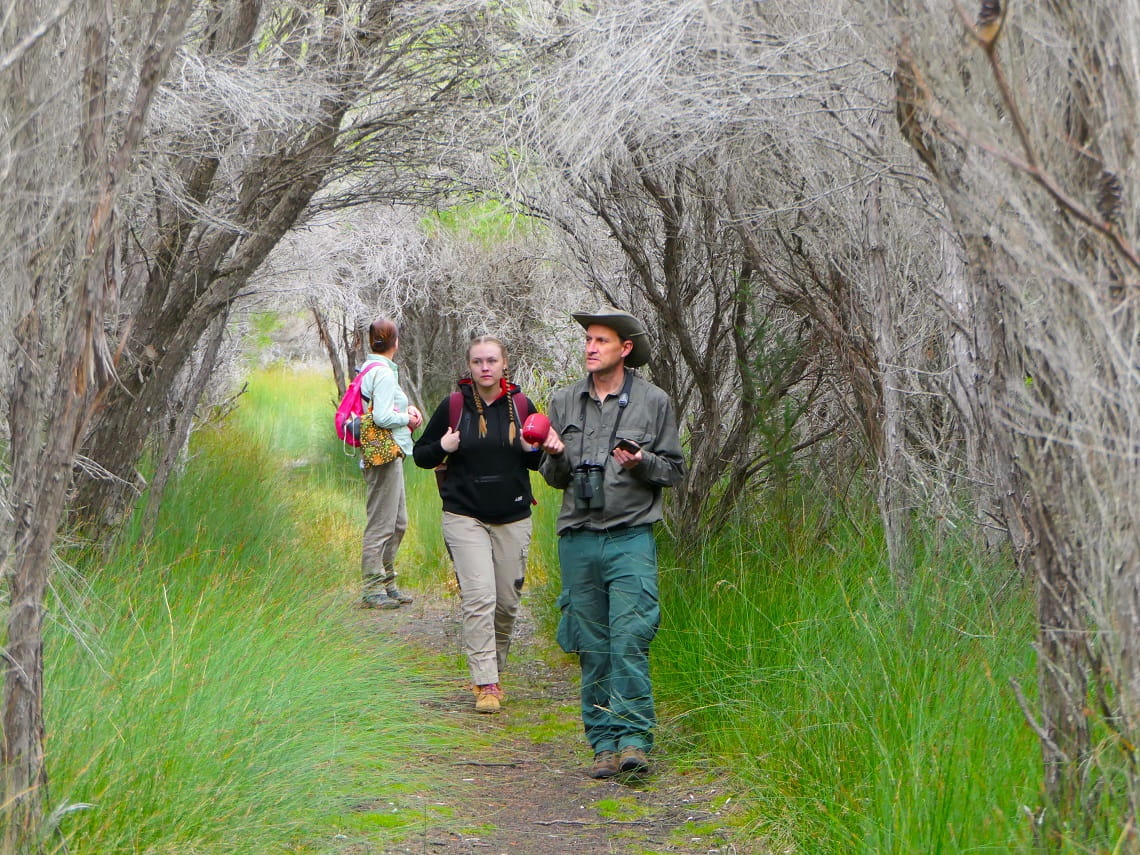
Playing bird calls to attract bristlebirds to the areas
Credit: Mark Antos - Parks Victoria
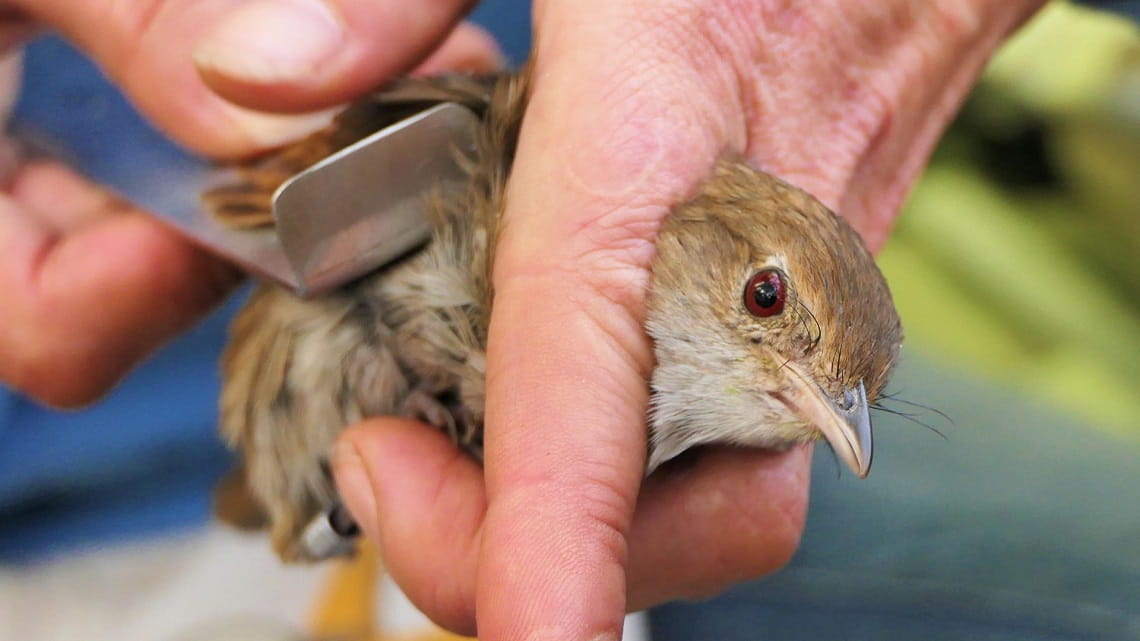
Careful handling by experts helps minimise stress Credit: Mark Antos - Parks Victoria
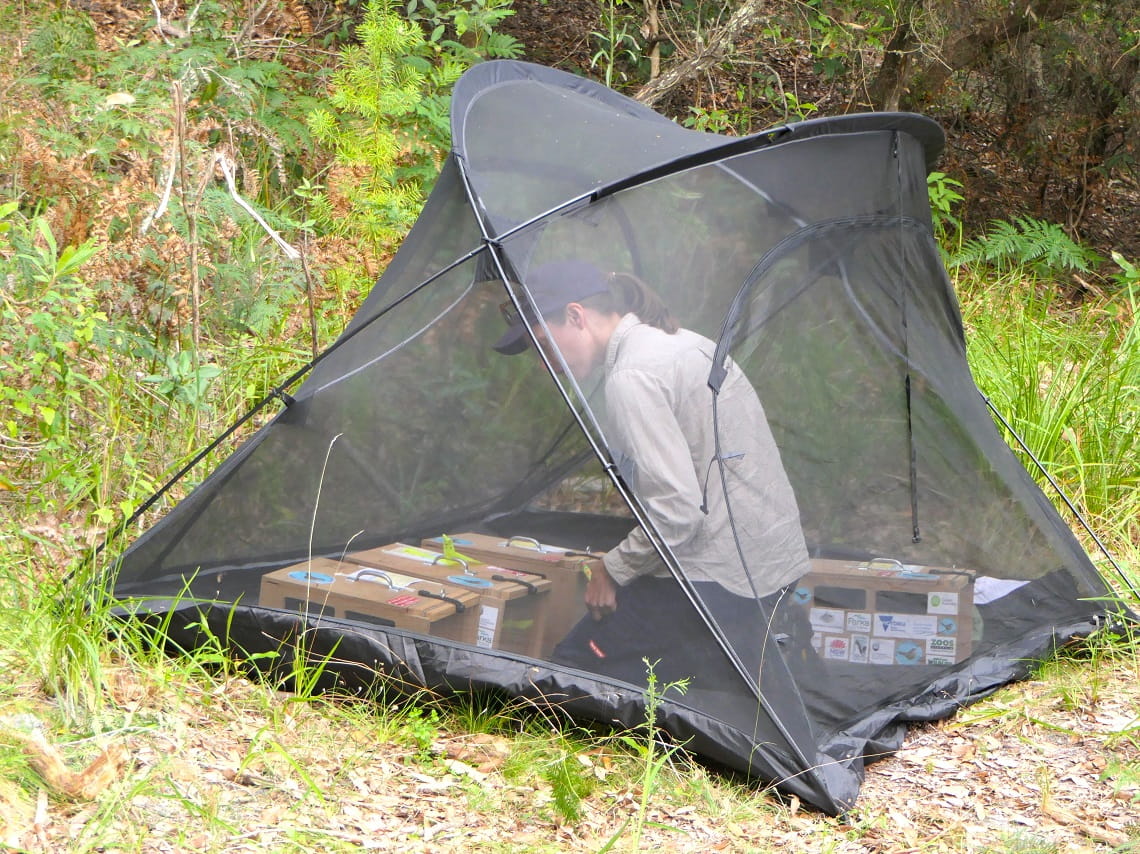
Bristlebirds in the holding tent ready to make their way to Wilsons Promontory Credit: Mark Antos - Parks Victoria
The bristlebird's silent car journey in the special box Credit: Marcia Riederer - DEECA
About the eastern bristlebird
The eastern bristlebird is a nationally threatened species, listed as critically endangered in Victoria with fewer than 200 estimated remaining in the wild.
This small plucky golden-brown bird gets its name from the bristle whiskers around its beak that helps it grab fast moving insects.
The establishment of additional self-sustaining and genetically resilient populations (or 'insurance populations') is essential to the survival of this species, which is increasingly under threat from bushfire, predation by foxes and feral cats, grazing of habitat by introduced species and a lack of resilience due to their low dispersal ability, fragmented habitat and small population size.
In 2020, the Black Summer fires highlighted the realistic threat of one or more populations of eastern bristlebird being lost from a single catastrophic fire.
"The global distribution of this species is restricted to a continental scale," says Dr Mark Antos. "We're coming at this from a long-term perspective. Getting to this point has taken lots of careful planning, monitoring and land management.
Managing networks of parks as an integrated system is more important than ever to give biodiversity the best chance of thriving in a changing climate. It's only through good planning and management that we have suitable source sites for threatened species and recipient sites for translocations.
This concept really hit home for me when we were catching the Jervis Bay birds. It was thanks to decades of excellent conservation work and park management from NSW National Parks and Wildlife Service and Parks Australia that we were able to capture all the birds we needed for Victoria relatively easily. Same is the case at Howe Flat - careful long term monitoring and habitat management at this site have made the operation possible," says Mark.
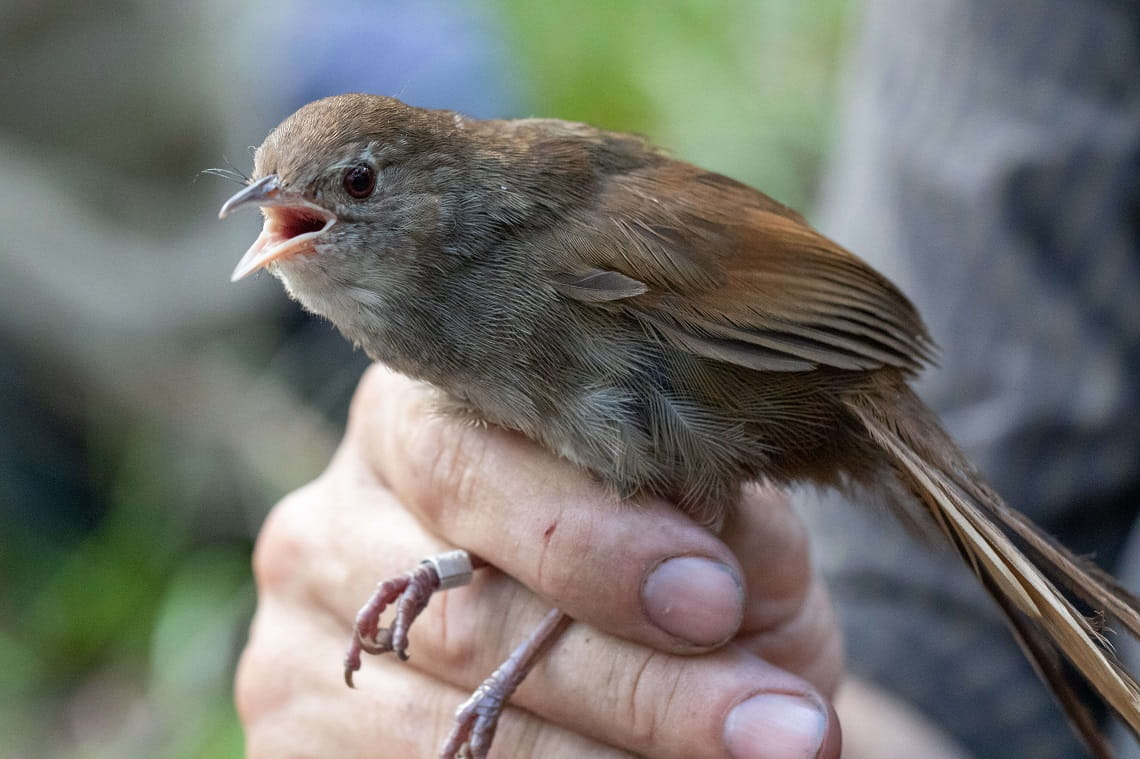
An eastern bristlebird. Credit: Marcia Riederer - DEECA
The Wilsons Prom population
Being situated on the southernmost point of mainland Australia, Wilsons Promontory National Park is naturally sheltered from the dramatic impacts of climate change. With the added protection through the Prom Sanctuary project, it is an excellent place for threatened species whose habitat in other parts of Victoria is suffering and may never be the same again.
"To give eastern bristlebirds and other vulnerable native species the best chance of thriving at Wilson Promontory, we have ramped up and enhanced our predator control programs," says Tara Ellard, Parks Victoria's Acting Area Chief Ranger for Wilsons Promontory National Park.
"We have deployed 4G cameras are using Artificial Intelligence to monitor translocation sites – telling us if predators are in the bristlebird's habitat. This provides us timely information so we can target our predator control in the right places at the right time."
"The remote cameras and automated acoustic recording devices also allow us to keep eyes and ears on bristlebirds and other native species, improving our understanding of their presence and movements."
After the first release of bristlebirds in autumn 2022, the birds were monitored in spring using a technique known as call playback monitoring. This involves playing the birds song at set stations 400m apart. Responses to the song from birds present in the environment are recorded from each location. This allows us to monitor changes in the population year on year in a non-invasive, standardised way. The results from the first spring monitoring were a great success with 16 of the 17 birds released recorded, as well as observations of pairs starting to form and at least one fledgling sighted.
Parks Victoria continues to conduct regular feral animal and weed control programs to ensure the safety of the establishing population of eastern bristlebirds as well as detailed fire planning to manage the fire sensitive heathland habitat that the birds call home.
What's next?
"There are several ways we define success for this program. Initially, most of the individuals survive the translocation process. In the medium term, the birds at Wilsons Promontory start to breed successfully. In the long-term, say ten years down the track, the Wilsons Promontory population is self-sustaining and the population spreads out to all suitable habitat," says Beau Fahnle, DEECA lead for the eastern bristlebird program.
Thanks to the dedication of many partner organisations and long-term monitoring across Victoria and New South Wales, we have the data to make informed decisions and be confident to undertake this three-year translocation project.
This project would not have been possible without the shared expertise, collaboration and investment of multiple partners across jurisdictions, and the commitment to species conservation actions and threat management over many years.
This years translocation forms phase 2 of a 3-year translocation effort, and builds upon many years of preparation, investment and on-ground management, including long-term predator control at both the Bherwarre Peninsula and Wilsons Promontory, management and monitoring of eastern bristlebird populations across Victoria and New South Wales, and an extensive national genetic analysis program lead by Cesar Australia.
Phase two of the Eastern Bristlebird Recovery Program in Victoria is led by DEECA with support from Parks Victoria, and program partners include Bird Life Australia, Currumbin Wildlife Sanctuary, NSW Environment and Heritage, NSW National Parks and Wildlife Service, Cesar Australia and Zoos Victoria.
This project contributes to the implementation of the Victorian Government's 20-year plan for nature, Protecting Victoria's Environment: Biodiversity 2037, and is delivered in partnership with the NSW Government's Saving our Species (SoS) program.
Note: Translocation of any native species is a precarious operation and is only ever considered as a last resort. Strict conditions need to be met before any translocations can occur.

